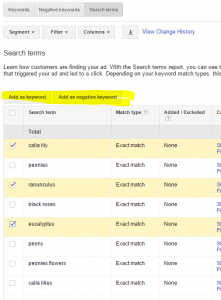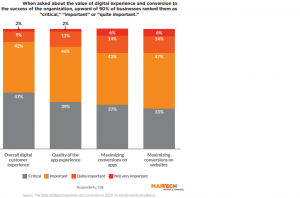Why You Can’t Have Digital Transformation Without Sustainability

With much of the world now focused on the goal of net zero carbon emissions by the year 2050, industry leaders are asking: How can businesses be more sustainable?
Sustainability has gone from being a nice to have to a mission statement, and businesses are transforming their operations to ensure they’re headed in the right direction.
At the same time, another revolution has sprung: digital transformation. Companies are busy adopting tools and technologies to make processes more efficient and competitive. In the pursuit of global optimization, businesses have a lot to gain from thinking about these two movements in conjunction.
What Does a Sustainable Business Model Look Like in Action?
Let’s say a company with sustainability baked into its business model has decided to invest time and focus on driving more efficient operations and reducing waste. This can look like using cheaper products, which means less packaging, less waste, and more efficient utilization of raw materials — all leading to lower costs of materials. So, for example, the company might choose to quit paper mail or move customer service from an expensive downtown office to an online hub.
Part of creating a sustainable business model is being transparent and communicative about it.
Being open about how much energy it uses helps the business create change internally and in its community. And showing these decisions to employees and customers helps nurture a brand with a strong set of values, which builds trust, motivation, and well-being. Additionally, funds flow to companies with high ESG ratings, resulting in higher valuations.
Businesses Benefit From Sustainability
Businesses that adopt this kind of sustainable model are going to reap several significant benefits:
First, they can better meet consumer demands.
Now that sustainability is a very visible public concern, a large portion of the global population cares about seeing businesses take action. For example, 81% of global consumers feel companies should help tackle climate change.
They can improve efficiency.
A business carving out a new efficiency area saves money and time. So creating a sustainable business model essentially means freeing up resources — whether that’s human resources, energy, paper, or time — to make a less harmful impact.
They can attract skilled talent.
Like today’s consumers, today’s employees are looking to commit to sustainability. Almost 64% of Millennials say they would turn down a job if the company didn’t have strong corporate responsibility practices.
How Can Digital Transformation Create a More Sustainable Business?
Transforming business processes to be more data-driven and efficient inevitably makes sustainability easier. Here’s how:
1. Eliminate physical processes.
Businesses can eliminate a lot of carbon emissions by automating physical processes. Cut out costly trips, unnecessary overheads, and longer hours. Then, you can reap energy savings. Digital transformation also empowers research and development.
To do sustainability successfully, we need new tools and innovations.
Alternatives to plastic. New drugs. More efficient vehicles. Even natural disaster forecasting. Mining data and leveraging AI can make these innovations possible.
2. Identify areas for improvement.
You can find improvement areas by using big data and analytics and honing them. By doing this, you can get more wins out of fewer resources and benefit from moments of high demand.
For instance, one of our clients used our predictive AI models to calculate which of its clients would need refueling in the next week, optimizing their fuel distribution routes and saving CO2.
3. Save energy with automation.
Automated production and service steps save time, and time means energy. Automation even led one Spanish automotive supplier to cut 50 gigawatt-hours of energy in a single year. Moreover, the increased efficiency of these savings led to further savings the following year.
4. Accelerate learning.
Digital innovations can aid human learning, so we can understand and take action on problems far quicker. This has inevitable benefits for sustainability.
AI tools can democratize education, connecting anyone who needs it to knowledge and expertise. This way, you don’t have to wait for an environmental specialist to come along; anyone with a passion for your company can become a sustainability warrior and innovate solutions for your unique workplace.
A Tale of Two Transformations
Digital transformation and sustainability impact one another in tandem. Both are synonymous with innovation. We must renovate our economic models, work processes, communication, and more to make both kinds of transformation work. That’s why thinking about a sustainable business model alongside a digital business model makes sense.
What About Carbon Emissions From Digital Systems?
Though digital transformation can aid sustainability efforts, it also comes with its own environmental impact. Setting up digital systems is not a carbon-free endeavor, so how can companies manage or offset these unwanted emissions? The good news is that although digital transformation has a carbon cost, the benefits usually far outweigh it.
The CO2 saved by increased efficiency is enough to make sustainable digital transformation a reality.
There are also ways to offset electricity production by choosing cloud providers instead of office power suppliers and monitoring partners’ energy sources. Digital tools and machine learning techniques enable companies to find the areas in their processes that use the most carbon and reduce unsustainable metrics.
The Takeaway
Sustainable digital transformation is possible. Not only that but digital transformation and sustainability work in tandem. For example, evaluating processes for their energy efficiency, monitoring sustainability metrics, and implementing digital tools and automation to save time and resources — all these actions form a powerful loop by which sustainability drives digital transformation and vice versa.
Featured Image Credit: Joshua Sortino; Unsplash; Thank you!
The post Why You Can’t Have Digital Transformation Without Sustainability appeared first on ReadWrite.
(30)








